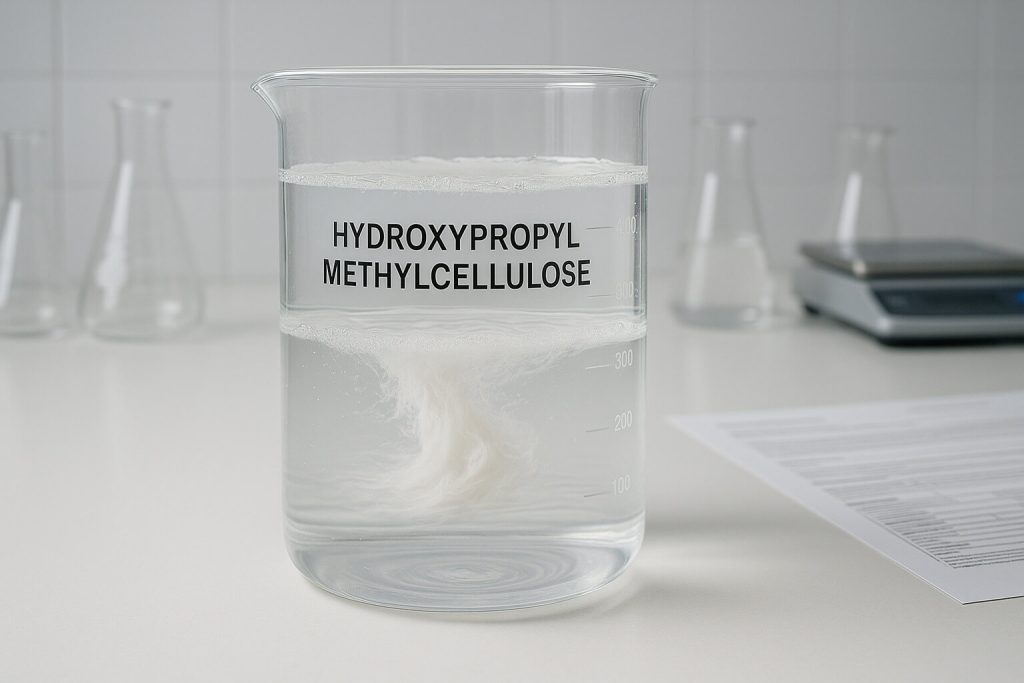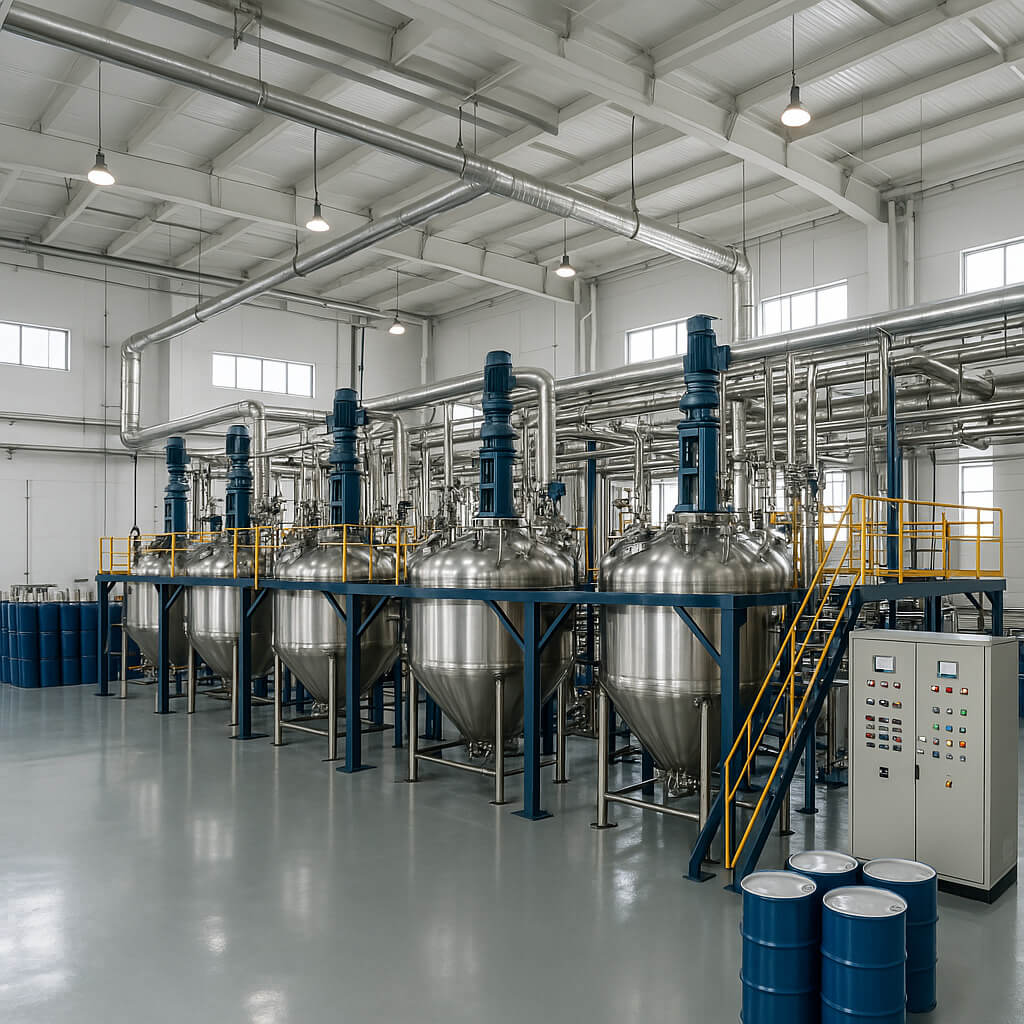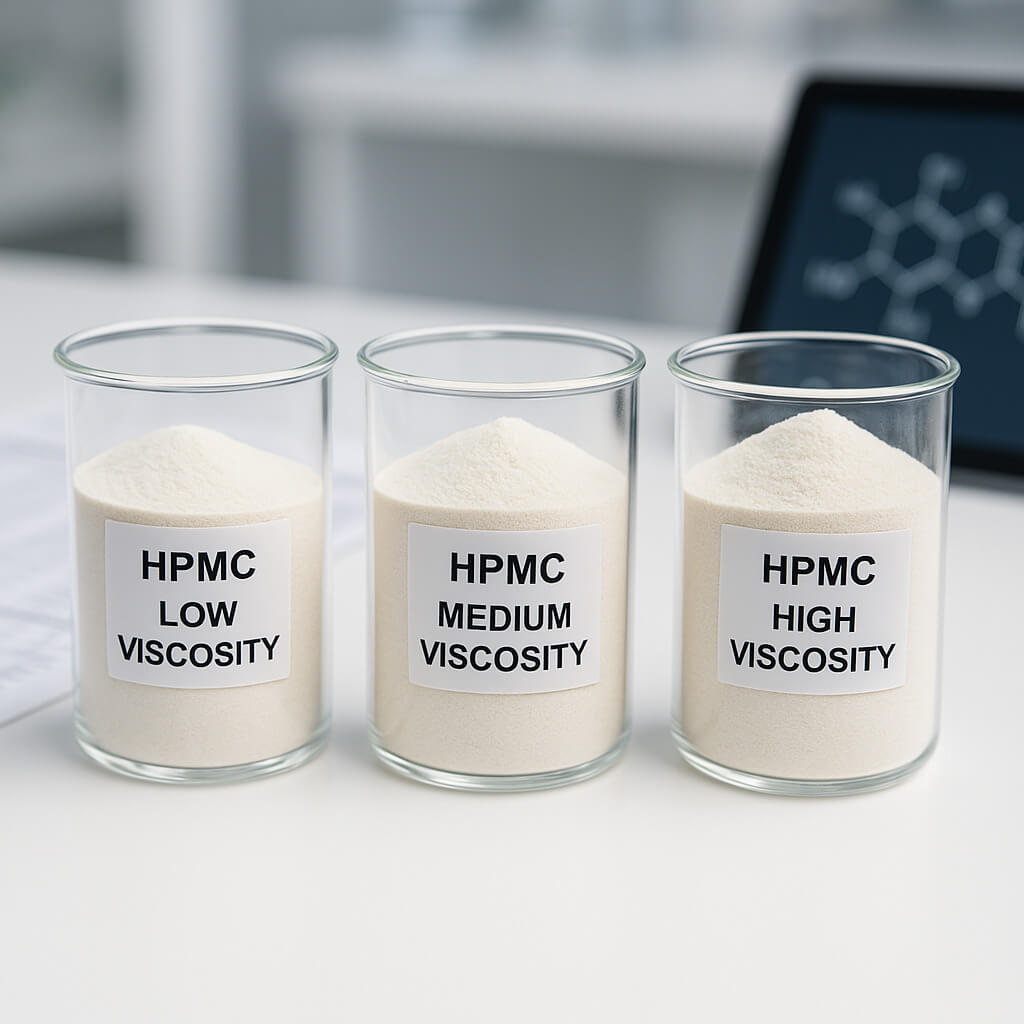Hydroxypropyl methylcellulose (HPMC) is a versatile cellulose derivative used in a variety of industries, from pharmaceuticals to food production and construction. In this article, we will explore the key ingredients of hydroxypropyl methylcellulose, shedding light on its composition, uses, and importance across different sectors. By the end, you will have a comprehensive understanding of HPMC, its benefits, and how it plays a crucial role in everyday products and applications.

1. What Are the Main Ingredients of Hydroxypropyl Methylcellulose?
Hydroxypropyl methylcellulose (HPMC) is primarily made from cellulose, which is a natural polymer found in plant cell walls. However, to create HPMC, cellulose undergoes a series of chemical processes, modifying its structure to enhance its properties. The primary ingredients that make up hydroxypropyl methylcellulose are cellulose, methyl groups, and hydroxypropyl groups.
The process begins with the extraction of cellulose, which is then chemically modified. The cellulose molecules are treated with methyl chloride to introduce methyl groups, and then hydroxypropyl groups are added to improve the solubility and viscosity of the final product. The ratio of these ingredients varies depending on the specific requirements of the end product, but the core components remain consistent.
The methyl and hydroxypropyl groups serve to make HPMC soluble in cold water, providing a unique combination of high viscosity and excellent film-forming properties. This is what makes HPMC ideal for use in various industries, including construction, pharmaceuticals, and food production.
Why is this important? Well, the precise composition of HPMC determines its functionality in different applications. For instance, the solubility and thickening properties are crucial for its role in pharmaceuticals, while its binding capabilities are essential in construction materials.
| المكونات | Role in HPMC Production | Function in Application |
|---|---|---|
| Cellulose | Base material | Forms the backbone of HPMC |
| مجموعات الميثيل | التعديل الكيميائي | Enhances water solubility |
| مجموعات هيدروكسي بروبيل | التعديل الكيميائي | Improves viscosity and solubility |
2. How is Hydroxypropyl Methylcellulose Made?
Hydroxypropyl methylcellulose is produced through a series of chemical reactions. The process begins with purified cellulose extracted from wood pulp or cotton linters. This cellulose is then reacted with a series of chemicals in a controlled environment to create HPMC.
The first step involves etherification, where the cellulose fibers are treated with methyl chloride in the presence of a base like sodium hydroxide. This process introduces the methyl group into the cellulose molecule. Next, the hydroxypropylation step occurs, where the cellulose is reacted with propylene oxide, introducing the hydroxypropyl groups.
The final step is the washing and drying process, where the HPMC is purified and dried into a powder form. This powdered form can then be used in various applications, from building materials to pharmaceuticals.
Here’s the deal: The production process is highly controlled to ensure consistency in the properties of the final product. Adjustments in the ratio of methyl to hydroxypropyl groups can modify the viscosity, dissolution rate, and other properties of HPMC. The level of modification determines the suitability of HPMC for a particular industry or application.
| خطوة | وصف | Key Chemical Involved |
|---|---|---|
| الأثير | Reaction of cellulose with methyl chloride | كلوريد الميثيل |
| Hydroxypropylation | Reaction of cellulose with propylene oxide | أكسيد البروبيلين |
| طهارة | Washing and drying to produce a powder form | Water and air drying |
3. What Industries Use Hydroxypropyl Methylcellulose?
Hydroxypropyl methylcellulose is an essential ingredient in a variety of industries. The unique properties of HPMC—its solubility, viscosity, and film-forming capabilities—make it incredibly versatile. Let’s break down its usage across several sectors:
In the صناعة البناء, HPMC is widely used in dry mortar, tile adhesives, and cement products. Its ability to enhance water retention, improve adhesion, and provide workability makes it indispensable in these applications. Additionally, its water retention properties are crucial for preventing premature drying of cement or mortar during application.
In the pharmaceutical sector, HPMC serves as a binder and stabilizer in tablet and capsule formulations. It helps control the release of active ingredients, ensuring that the medication is delivered to the body in a controlled manner. Moreover, it is used in eye drops and other liquid medications due to its ability to form a protective film.
In the صناعة الأغذية, HPMC is used as a food additive to modify texture, enhance viscosity, and improve the shelf life of various products. It can be found in dairy products, sauces, and gluten-free products, providing necessary consistency and stability.
You might be wondering why HPMC is so popular across these industries. The answer lies in its versatility, as it can be tailored to meet the specific requirements of each sector, from improving the performance of construction materials to enhancing the quality of food and medicine.
| صناعة | طلب | فوائد HPMC |
|---|---|---|
| بناء | Tile adhesives, mortars, and coatings | Improves adhesion, water retention, and workability |
| المستحضرات الصيدلانية | Tablets, capsules, eye drops | Controls release, enhances stability |
| صناعة الأغذية | Dairy, sauces, gluten-free products | Enhances texture and viscosity |
4. Why is Hydroxypropyl Methylcellulose Important for Construction?
Hydroxypropyl methylcellulose (HPMC) plays a pivotal role in the construction industry, particularly in the production of dry mixes such as mortar, tile adhesives, and other cement-based products. The use of HPMC in these materials provides numerous benefits that enhance the workability and durability of construction materials.
Here’s why it matters: HPMC acts as a thickening agent, improving the consistency of mortar and tile adhesives. This makes it easier to apply and smooth out materials during construction. Furthermore, HPMC helps to retain moisture in the mixture, preventing premature drying. This is especially crucial in areas where construction must continue over extended periods.
HPMC also improves the adhesion properties of mortars and adhesives, making them more effective at bonding to surfaces. This is essential in tile laying and flooring installations, where a strong bond is necessary to ensure long-lasting results.
| فائدة | Impact on Construction Materials |
|---|---|
| تحسين قابلية العمل | Easier application and smoothing |
| التصاق معزز | Stronger bonding between surfaces |
| الاحتفاظ بالرطوبة | Prevents premature drying of mixtures |
5. How Does Hydroxypropyl Methylcellulose Affect Food Products?
In the food industry, hydroxypropyl methylcellulose serves as an important ingredient, offering a variety of benefits in food processing and formulation. Its primary function is to modify the texture and consistency of products, making it particularly valuable in dairy, sauces, and gluten-free foods.
For instance, in dairy products like ice cream, HPMC helps to improve the creaminess and smoothness, enhancing mouthfeel and preventing ice crystal formation. In sauces and dressings, it increases viscosity, ensuring a consistent and stable product.
In gluten-free foods, HPMC plays a crucial role in providing the necessary structure that gluten would typically contribute. This makes gluten-free products like bread and pasta more appealing in terms of texture and taste.
You might be curious about how HPMC affects the taste of food. The good news is that HPMC is tasteless and odorless, so it doesn’t alter the flavor of the products it’s added to, ensuring that it’s an effective additive without compromising the sensory experience.
| طلب | Product Impact | فوائد HPMC |
|---|---|---|
| منتجات الألبان | Improves creaminess and smoothness | Enhances mouthfeel, prevents ice crystal formation |
| Sauces and Dressings | Increases viscosity and stability | Maintains consistent texture |
| الأطعمة الخالية من الغلوتين | Improves structure and texture | Provides necessary structure without gluten |
6. What Are the Benefits of Hydroxypropyl Methylcellulose in Pharmaceuticals?
In the pharmaceutical industry, hydroxypropyl methylcellulose (HPMC) is a key ingredient in the formulation of tablets, capsules, and liquid medications. Its unique properties make it ideal for a variety of pharmaceutical applications, especially in controlled-release formulations.
Here’s why HPMC is crucial: As a binder, HPMC helps to hold tablet ingredients together, ensuring they remain stable during storage and use. Additionally, HPMC acts as a disintegrant, promoting the controlled breakdown of tablets in the digestive system. This allows for a more consistent and effective release of the active ingredients over time.
HPMC is also used in the creation of gel capsules, where its film-forming properties are put to work. It creates a protective barrier around the active ingredients, ensuring that they are released gradually as the capsule dissolves.
| طلب | دور HPMC | فوائد HPMC |
|---|---|---|
| Tablet Formulations | Binder and disintegrant | Ensures stability and controlled release |
| Gel Capsules | Film-forming agent | Protects active ingredients, promotes gradual release |
7. Is Hydroxypropyl Methylcellulose Safe to Use?
Hydroxypropyl methylcellulose is generally considered safe for use in a wide range of applications. It is commonly used in food, pharmaceuticals, and cosmetics, and it has been extensively tested for safety. Regulatory agencies like the U.S. Food and Drug Administration (FDA) and the European Food Safety Authority (EFSA) have approved the use of HPMC in food and drug products.
You might be concerned about the safety of HPMC, but rest assured, it has a long history of safe use. The substance is non-toxic and biodegradable, meaning it poses minimal risk to human health or the environment. However, some individuals may have allergic reactions to HPMC, particularly in food products.
| Regulatory Agency | حالة الموافقة | حالة الاستخدام الشائعة |
|---|---|---|
| إدارة الغذاء والدواء | Approved for food and drug use | Food additives, pharmaceuticals |
| EFSA | Approved for food use | Food processing, additives |
8. How Does Hydroxypropyl Methylcellulose Compare to Other Cellulose Derivatives?
When comparing hydroxypropyl methylcellulose to other cellulose derivatives, such as methylcellulose and carboxymethylcellulose, HPMC stands out due to its unique balance of solubility and viscosity. Methylcellulose, for example, is water-soluble but lacks the thickening properties that HPMC offers. On the other hand, carboxymethylcellulose is highly viscous but doesn’t dissolve as readily in water.
Here’s what sets HPMC apart: Its versatility allows it to serve as both a thickener and a binder, making it ideal for a variety of applications across multiple industries. While methylcellulose is used in food processing and pharmaceuticals, it does not offer the same performance in construction materials as HPMC.
| Cellulose Derivative | الذوبان | اللزوجة | التطبيقات الشائعة |
|---|---|---|---|
| هيدروكسي بروبيل ميثيل السليلوز | Soluble in cold water | Moderate to high | Construction, pharmaceuticals, food |
| Methylcellulose | Soluble in hot water | Low to moderate | الأغذية والأدوية |
| Carboxymethylcellulose | Soluble in water | عالي | Food, cosmetics |
9. What Are the Environmental Impacts of Hydroxypropyl Methylcellulose?
Hydroxypropyl methylcellulose is considered environmentally friendly due to its biodegradable nature. It is derived from renewable plant materials, making it a more sustainable option compared to synthetic polymers. Furthermore, the production process of HPMC has a relatively low environmental impact, especially when compared to petrochemical-based additives.
Here’s the key takeaway: HPMC’s biodegradability and renewable source make it an eco-friendly choice for a wide range of industries. While there are still some challenges associated with the production process, ongoing research is focused on improving sustainability and reducing the environmental footprint.
| Environmental Aspect | تأثير HPMC | Sustainability Feature |
|---|---|---|
| قابلية التحلل البيولوجي | Breaks down naturally in the environment | Reduces long-term environmental impact |
| Renewable Source | Derived from plant cellulose | Supports sustainability in production |
10. What Future Innovations Are Possible with Hydroxypropyl Methylcellulose?
The future of hydroxypropyl methylcellulose looks promising, with ongoing research and innovations aimed at improving its properties and expanding its applications. One area of focus is the development of HPMC formulations with enhanced performance in eco-friendly construction materials.
The exciting part: As demand for sustainable solutions continues to grow, HPMC’s ability to offer both functionality and environmental benefits makes it a key player in future material science advancements.
| Area of Innovation | Potential Impact | Future Application |
|---|---|---|
| مواد البناء | Improved eco-friendly formulations | Green building materials |
| المستحضرات الصيدلانية | More efficient drug delivery systems | تركيبات الإطلاق الخاضع للرقابة |
التعليمات
Q1: What is hydroxypropyl methylcellulose?
Hydroxypropyl methylcellulose (HPMC) is a cellulose derivative used in various industries, including pharmaceuticals, construction, and food production. It is created by modifying cellulose with methyl and hydroxypropyl groups.
Q2: How does hydroxypropyl methylcellulose work in construction?
In construction, HPMC acts as a thickener, improving workability, adhesion, and moisture retention in products like tile adhesives and mortars.
Q3: What are the health and safety concerns related to hydroxypropyl methylcellulose?
HPMC is generally considered safe, but some individuals may have allergic reactions, especially in food products. It is non-toxic and biodegradable.
Q4: Can hydroxypropyl methylcellulose be used in organic food?
Yes, HPMC is suitable for use in organic food products as it is derived from plant cellulose and does not involve synthetic chemicals.
Q5: What is the future of hydroxypropyl methylcellulose?
The future of HPMC includes innovations in sustainable materials and its expanded use in industries like construction and pharmaceuticals.




